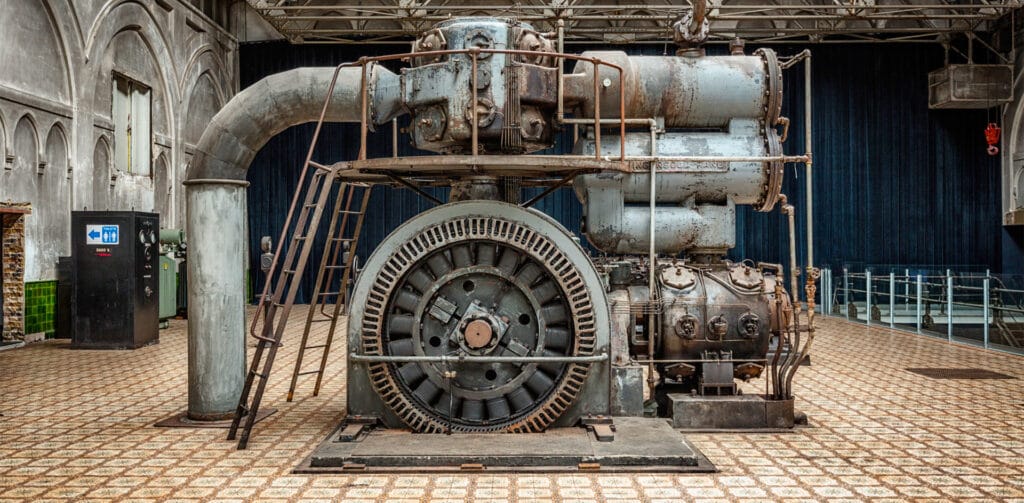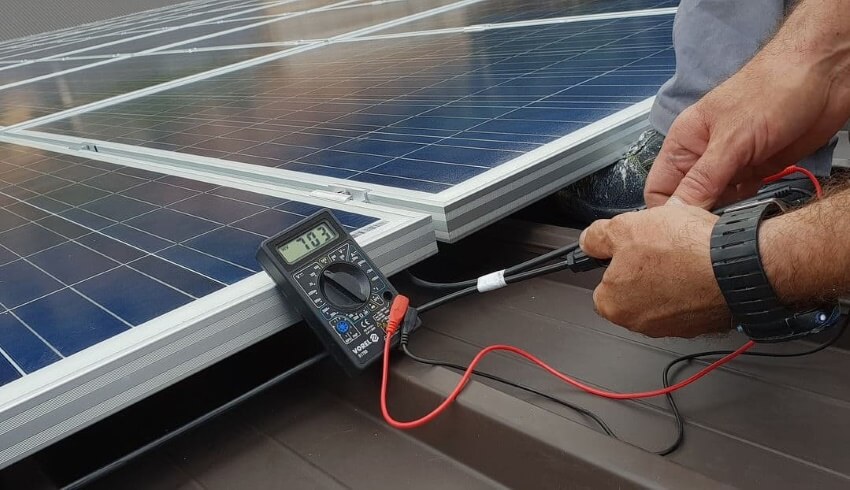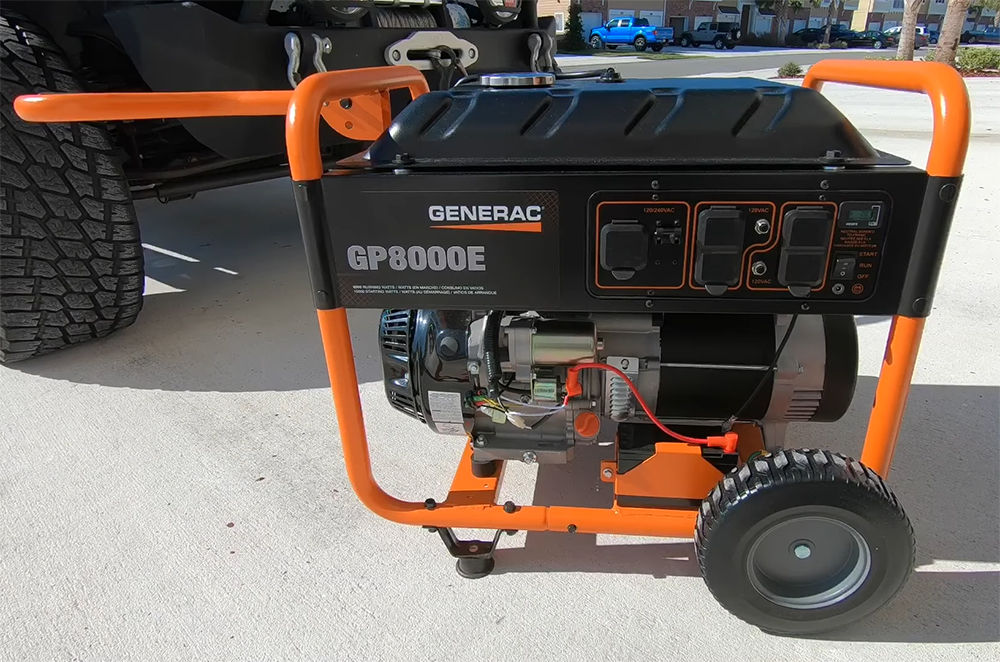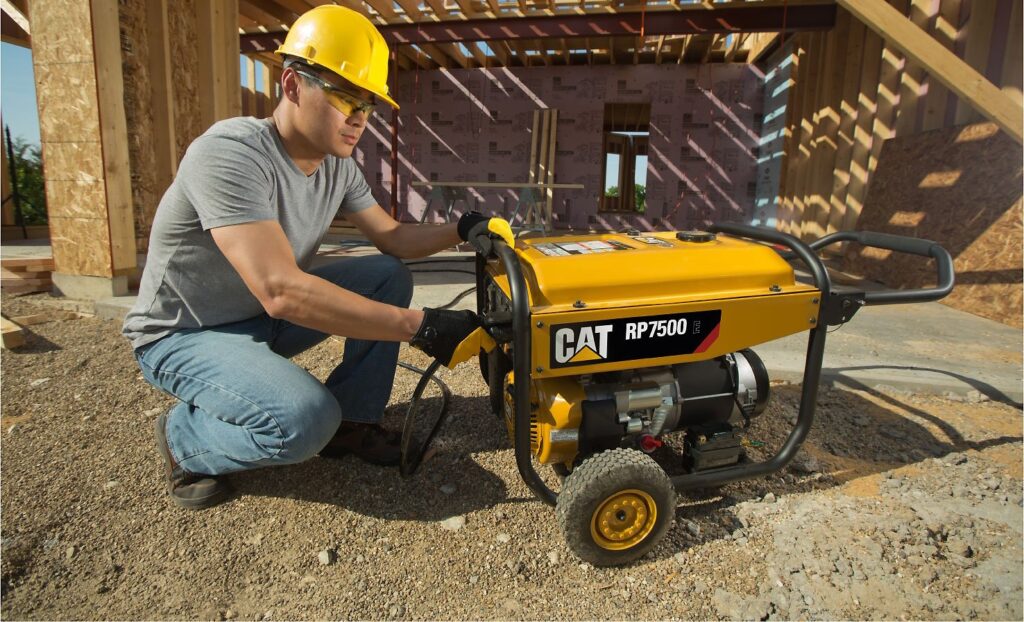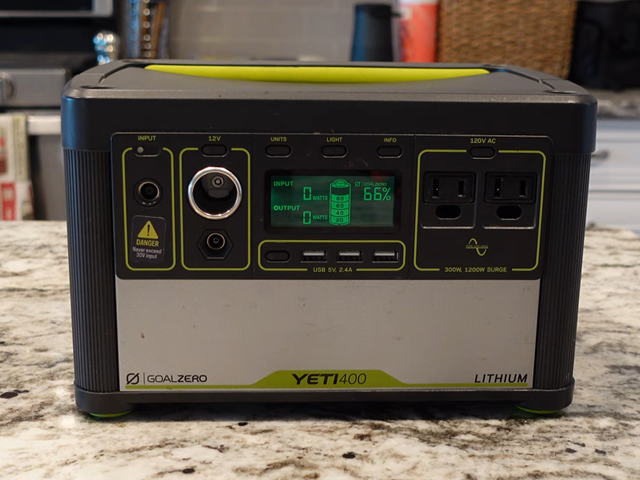
If you’re looking for a new generator, two Japanese companies stand out from the pack: Honda and Ryobi. These two brands produce competing lines of generators that are very different in price. Honda generators tend to be high-priced, premium power units, whereas Ryobi models are extraordinarily affordable.
So, what’s the difference between Honda vs. Ryobi generators, and which brand is right for you? In this guide, we’ll help you determine whether Honda or Ryobi generators better suit your needs. We’ll take a close look at what both brands have to offer and compare some of the companies’ most popular generator models head to head.
Honda is one of the most storied companies in the world when it comes to motors, and this holds true for the company’s generators. Honda started making generators more than 50 years ago, in 1965. The company was on the leading edge of introducing inverter generators to the consumer market, and it continues to push the boundaries of how quiet a generator can be while still delivering the power you need.
Ryobi has a similarly long history in the generator business. The company has been producing generators and other power tools for around 40 years. Ryobi has distinguished itself not on technological innovation, but on affordability – the company’s generators are impressively inexpensive for the amount of power they provide.
The differences between Honda and Ryobi generators start right in the hearts of the power units. Honda generators are built with genuine Honda engines, which are beloved by anyone who has used a Honda product. There are numerous contractors and DIYers who swear by the quality of their Honda engines and report that they’ve used the same generator for more than a decade without problems.
Ryobi builds its own engines for its generators, but they’re simply nowhere near the quality of Honda engines. Ryobi generators have much more of a reputation for being hit or miss – some units last for a decade or more, but others break down after just a few years of use. So, you can’t necessarily count on numerous years of reliability with a Ryobi generator.
The other big difference that puts Honda a cut above the rest of the generator industry, Ryobi included, is how quiet the company’s generators are. Honda generators are typically 10 to 100 times less noisy than Ryobi generators producing the same amount of power. That’s not a fault on Ryobi’s part – Honda’s generators are simply that quiet.
Of course, you pay handsomely for a genuine Honda engine and years of development of quieter technology. If budget is at all a concern, it’s hard not to look longingly at Ryobi. The company’s generators cost a fraction of what Honda charges for the same amount of power.
One area where the two companies are more evenly matched is in their warranty policies. Ryobi offers a three-year warranty for residential users on all of its generator models – but no warranty for commercial users. Honda offers a two- or three-year residential warranty, depending on the specific generator model. However, Honda also offers a three-year commercial warranty for most – but not all – of its generators.
The best way to get a sense of how Honda and Ryobi stack up is to look at some of their most popular generator models head to head. We’ll look at three different pairings that span Honda and Ryobi’s inverter and conventional generator lines and cover a wide range of power needs.
| Honda EU1000i | Ryobi RYi1000 | |
| Type | Inverter | Inverter |
| Peak watts | 1000W | 1000W |
| Rated watts | 900W | 900W |
| Engine | Honda GXH50 4-stroke air-cooled OHV | Ryobi single-cylinder 4-cycle OHV |
| Displacement | 49.4cc | 54cc |
| Fuel tank | 0.6 gal. | 0.6 gal. |
| Run time | 3.2 hrs (rated load), 7.1 hrs (1/4 load) | 8 hrs (1/2 load) |
| Outlets | (1) 15A 125V Duplex; (1) 12V 96W (8A) Automotive | (1) 20A 120V AC; (1) 12V DC Automotive |
| Start type | Recoil | Recoil |
| Noise level | 42–50 dBA | 68 dBA |
| Dimensions | 17.7 x 9.4 x 15 in | 16 x 12 x 16.5 in |
| Weight | 28.7 lbs | 35 lbs |
| Warranty | 2-year limited (residential), 1-year limited (commercial) | 3-year limited (residential) |
| VIEW ON AMAZON | VIEW ON AMAZON |
The Honda EU1000i and Ryobi RYi1000 are designed for users who only need a small amount of power. Both generators are inverter models that provide 1,000 watts of surge power and 900 watts of continuous power. Each model is powered by a highly efficient four-stroke, air-cooled engine.
However, it’s noteworthy that the Ryobi generator is actually significantly more fuel-efficient. It allows you to draw 450 watts for up to eight hours at a time. By comparison, you’ll need to refill the Honda generator after around five hours at the same power draw. Both generators come with 0.6-gallon fuel tanks, so all of this difference in run time is due to fuel efficiency.
The outlet panels on these two generators are similar, but not quite the same. The Honda EU1000i offers a pair of 125-volt outlets, while Ryobi’s generator only offers a single 120-volt outlet for you to use. It’s also worth noting that while the Ryobi generator is an inverter model, it doesn’t have a parallel operation port.
The most noticeable difference between these two generators is by far the amount of noise they produce. The Honda generator is virtually silent, producing just 42 dB of noise at a 25% load and 50 dB at full power. The Ryobi model produces 68 dB at a 25% load – that’s more than 100 times louder than the Honda competitor and louder even than a lot of 3,000-watt inverter generators from other companies.
Both generators are designed to be carried by hand, and they’re small and lightweight enough to be easily portable. The Ryobi model is a few pounds heavier, but this shouldn’t be the deciding factor between these two generators.
Ultimately, the choice here comes down most to how much you’re willing to pay for a quieter generator. The Honda unit costs more than $850, compared to just $470 for the Ryobi model.
| Honda EU2200i | Ryobi RYI2300BTA | |
| Type | Inverter | Inverter |
| Peak watts | 2200W | 2300W |
| Rated watts | 1800W | 1800W |
| Engine | OHC, 4-stroke, single cylinder | Ryobi OHV 4-cycle |
| Displacement | 121cc | 80cc |
| Fuel tank | 0.95 gal. | 1.2 gal. |
| Run time | 8.1 hrs (1/4 load) | 10.3 hrs (1/4 load) |
| Outlets | (2) 120V Household; (1) 12V DC | (2) 120V AC 20A and (2) 5V DC 2.1A USB |
| Start type | Recoil | Recoil |
| Noise level | 48–57 dBA | 57–67.9 dBA |
| Dimensions | 20.0 x 11.4 x 16.7 in | 19 x 12.5 x 22 in |
| Weight | 46.5 lbs | 53 lbs |
| Warranty | 3-year limited (residential and commercial) | 3-year limited (residential) |
| VIEW ON AMAZON | VIEW ON AMAZON |
The Honda EU2200i and Ryobi RYI2300BTA sit in the popular 2,000-watt inverter generator class. They’re closely matched on power – both generators offer 1,800 watts of running power and the Ryobi edges out the Honda on surge power by just 100 watts.
Once again, the Ryobi generator has an edge when it comes to run time. In this case, it’s less a difference in the fuel efficiency of the four-stroke engines and more a result of the differences in fuel tank sizes. The Honda’s 0.95-gallon fuel tank gives it an eight-hour run time at a 25% load, while the Ryobi model’s 1.2-gallon fuel tank lets it run for 10 hours at the same power draw. It’s worth noting that neither of these run times are spectacular if you need to draw 1,000 watts or more for a full day of work.
Both generators offer a pair of 120-volt outlets for your general power needs. But, the Ryobi RYI2300BTA has a pair of USB outlets where the Honda EU2200i has a 12-volt DC outlet. More important, the Ryobi generator includes an LCD display so that you can monitor your power draw and remaining runtime. The Honda doesn’t have any display, which is something of a drawback for ease of use.
Along the same lines, the Ryobi generator has a remote electric start. It’s equipped with Bluetooth, allowing you to control the generator from your phone using Ryobi’s free GenControl app. The Honda generator, in contrast, only offers a traditional recoil starter.
The Ryobi generator is also far more portable. It’s a little bit heavier than the Honda model, but it comes with a pair of wheels built into the frame as well as a telescoping front handle. To move the Honda generator, you have to lift the 46-pound weight (more with fuel inside) by hand using the top handle.
So, the Ryobi generator seems much more modern than the Honda in many ways. But, once again, the Honda generator has a significant edge when it comes to noise production. The EU2200i produces a maximum of 57 dB of noise at full power. The Ryobi generator produces that amount of noise as soon as you turn it on, and gets 10 times louder at full power.
Given the differences in price, the Ryobi generator has an edge over the Honda for occasional generator users. But, if you want a genuine Honda engine and minimal noise, the Ryobi simply can’t stand up to the EU2200i.
| Honda EM6500SX | Ryobi RY906500S | |
| Type | Conventional | Conventional |
| Peak watts | 6500W (7000W 10-second boost) | 8125W |
| Rated watts | 5500W | 6500W |
| Engine | Honda iGX commercial air-cooled 4-stroke OHV engine | Ryobi OHV |
| Displacement | 389cc | 420сс |
| Fuel tank | 6.2 gal. | 6 gal. |
| Run time | 10.4 hrs (1/2 load) | 10 hrs (1/2 load) |
| Outlets | (2) 20A 125V GFCI Duplex; (1) 30A 125V Locking; (1) 30A 125/250V Locking | (4) 120V AC 20 Amp GFCI; (1) 120/240V 30A |
| Start type | Electric, recoil | Recoil |
| Noise level | 64–66 dBA | 72.3 dBA |
| Dimensions | 41.4 x 27.8 x 28.3 in | 25 x 24.5 x 29 in |
| Weight | 234 lbs. | 205 lbs |
| Warranty | 3-year limited (residential and commercial) | 3-year limited (residential) |
| VIEW ON AMAZON | VIEW ON AMAZON |
The Honda EM6500SX and Ryobi RY906500S are closely matched conventional generators. Unlike for the competing inverter generators, the power delivery varies quite a bit between these models. The Honda unit offers 6,500 watts of surge power – 7,000 watts for up to 10 seconds with an engine boost – and 5,500 watts of continuous power. The Ryobi generator is more powerful, giving you fully 8,125 watts of surge power and 6,500 watts of running power.
Interestingly, both generators are built with 6-gallon fuel tanks. Despite the differences in power, each unit can run for about 10 hours at a 50% load.
The outlet panels are significantly different between these two generators. Both include four 120- or 125-volt household outlets and a more powerful 30-amp outlet that can switch between 120/125 volts and 240/250 volts. But, the Honda generator also includes another 125-volt 30-amp twist-lock outlet, which you can use to power and RV or a heavy appliance at home. The Ryobi generator foregoes this outlet, but includes an LCD hour meter so you can monitor your power draw and remaining run time. It’s also notable that the outlets on the Ryobi generator are covered.
Both generators include recoil starters, but Honda also included an electric start function to make running the EM6500SX easier. As you might expect, this generator is also quieter – although not by nearly as much as Honda’s inverter generators were to Ryobi’s. So, noise isn’t quite as much of a factor in deciding between these two generators.
Neither generator is light – they’re both over 200 pounds. But, Ryobi shaves 30 pounds off its model, which can make it easier for three to four people to lift. Both generators are mounted on steel frames with pneumatic wheels, allowing you to roll them around.
Given the similarities between these generators, it’s hard to justify the extreme price tag of the Honda unit. It costs fully $2,000 more than the Ryobi generator. Considering you get more power, less weight, and an LCD screen on the Ryobi generator, it seems more than reasonable to opt for the cheaper generator in this case.
Honda and Ryobi are both well-respected generator brands with a lot to offer. Honda focuses on minimizing the noise that its generators produce, especially in its inverter generator lineup. This is one of the main selling points that Honda offers – its inverter generators are 10 to 100 times quieter than Ryobi’s competing offerings.
That said, Ryobi prioritizes affordability while offering tons of features for ease of use. Ryobi consistently includes an LCD hour meter on its generators when Honda doesn’t. It also offers designs that are somewhat easier to transport. All of this comes at a cost that is often hundred to thousands of dollars less than what Honda’s competing generators are priced at.
Ultimately, whether Honda vs. Ryobi generators are right for you depends on what’s important to you. If you want a quiet, ultra-reliable generator, there’s no question that Honda wins out. If you’re on a tight budget and prefer features for ease of use, Ryobi generators are affordable and user-friendly.
